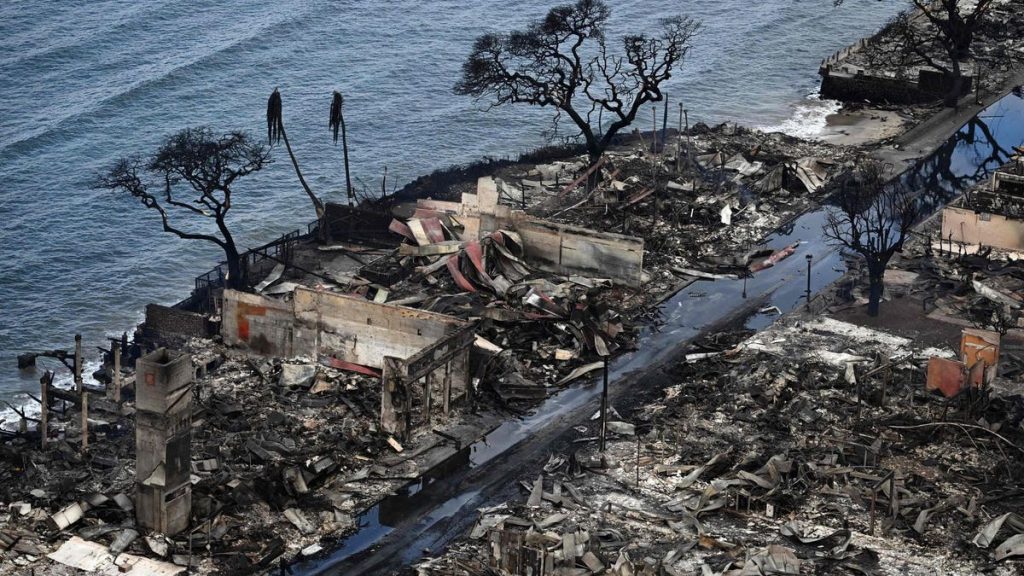Topline
After a week, the first five victims of the Maui fires have been identified, but as officials warn the identification process will be difficult, experts say the destruction of identifiable features—like hair, fingerprints and tattoos—and official records by the fires are the reason.
Key Facts
The death toll for the Maui fires reached 106 on Tuesday, but this number is expected to rise as crews continue to search the wreckage the fires left behind.
Of the 106 victims, only five have been identified—Maui County officials confirmed the identities of two residents who died in the fires that ravaged the town of Lahaina: Robert Dyckman, 74, and Buddy Jantoc, 79.
Three other individuals were identified, but the county is waiting until officials have contacted their next of kin before their names are released.
Hawaii Gov. Josh Green told CBS News crews are estimated to find between “10 and 20 people per day, probably, until they finish” searching over the next 10 days—officials expect between 85% and 90% of the area to be searched by the weekend.
About 1,300 people are still missing and around 32% of the area has been searched, according to a Maui County press release, though officials believe a larger-than-reported share of the area may have already been searched.
Families of missing people have given 41 DNA samples to help officials with identifying victims, the release reports.
Green told CNN identification will be “very difficult” and will likely take weeks to complete because a lot of the remains that were found are unrecognizable and fingerprints can’t be used.
Crucial Quote
“I want people to understand the reverence with which we’re doing this,” Maui Police Chief John Pelletier said about the search effort. “It’s not just ash on your clothing when you take it off. It’s our loved ones. That’s the reverence.”
Key Background
Fire victims have historically been difficult to identify. Anthony Falsetti, a forensic anthropologist, said it’s hard to identify people who died from fire-related deaths because fires destroy key “individuating characteristics,” like hair, dental traits and tattoos. Without usable DNA, the challenge of identifying people becomes tougher. According to Falsetti, if the deceased person doesn’t have any medical or dental records or their remains are so badly damaged that data collection is impossible, identification is out of the question. Chris Milroy, a professor of pathology and laboratory medicine at the University of Ottawa, told the BBC that data collection in Hawaii may be even more difficult because some civil services have been destroyed, so certain records, like medical records, may have been burned in the fires, too.
Tangent
Wildfires that devastated northern California in 2017 killed over 40 people. Police were unable to identify some victims because their remains were just ashes and bones, with Sonoma County Sheriff Rob Giordano saying, “when you’re cremated, you can’t get an ID.” The 2018 Camp Fire, which is California’s deadliest fire, claimed the lives of 85 people. Though they struggled with finding identifiable DNA, law enforcement was able to identify all of the victims, except one. None of the DNA profiles they have matched the final set of remains. A fire in Manila in the Philippines in 1998 resulted in the burial of 23 children whose remains were unidentified, according to a study published in the American Journal of Forensic Medicine and Psychology. However, 18 remains were identified three months later when local laboratories used both molecular-based and conventional identification techniques, like antemortem information.
Maui Wildfires: First Victims Named As Death Toll Rises To 106 (Forbes)
Crews searching for Maui wildfire victims could find another “10 to 20 people” a day, Hawaii’s governor says (CBS News)
Only five of the 106 dead in Maui have been identified because the remains are unrecognizable, Hawaii’s governor says (CNN)
Read the full article here










